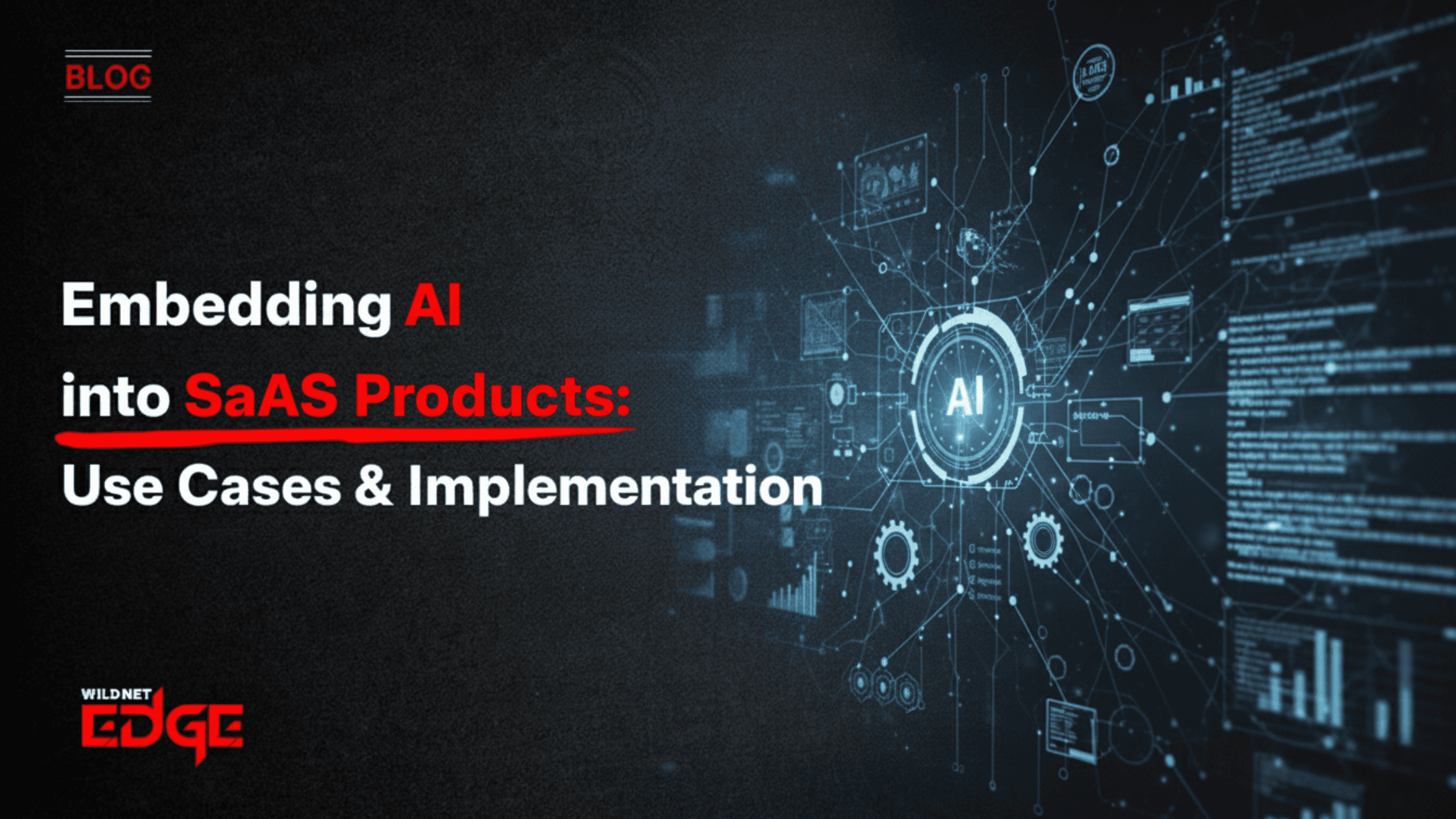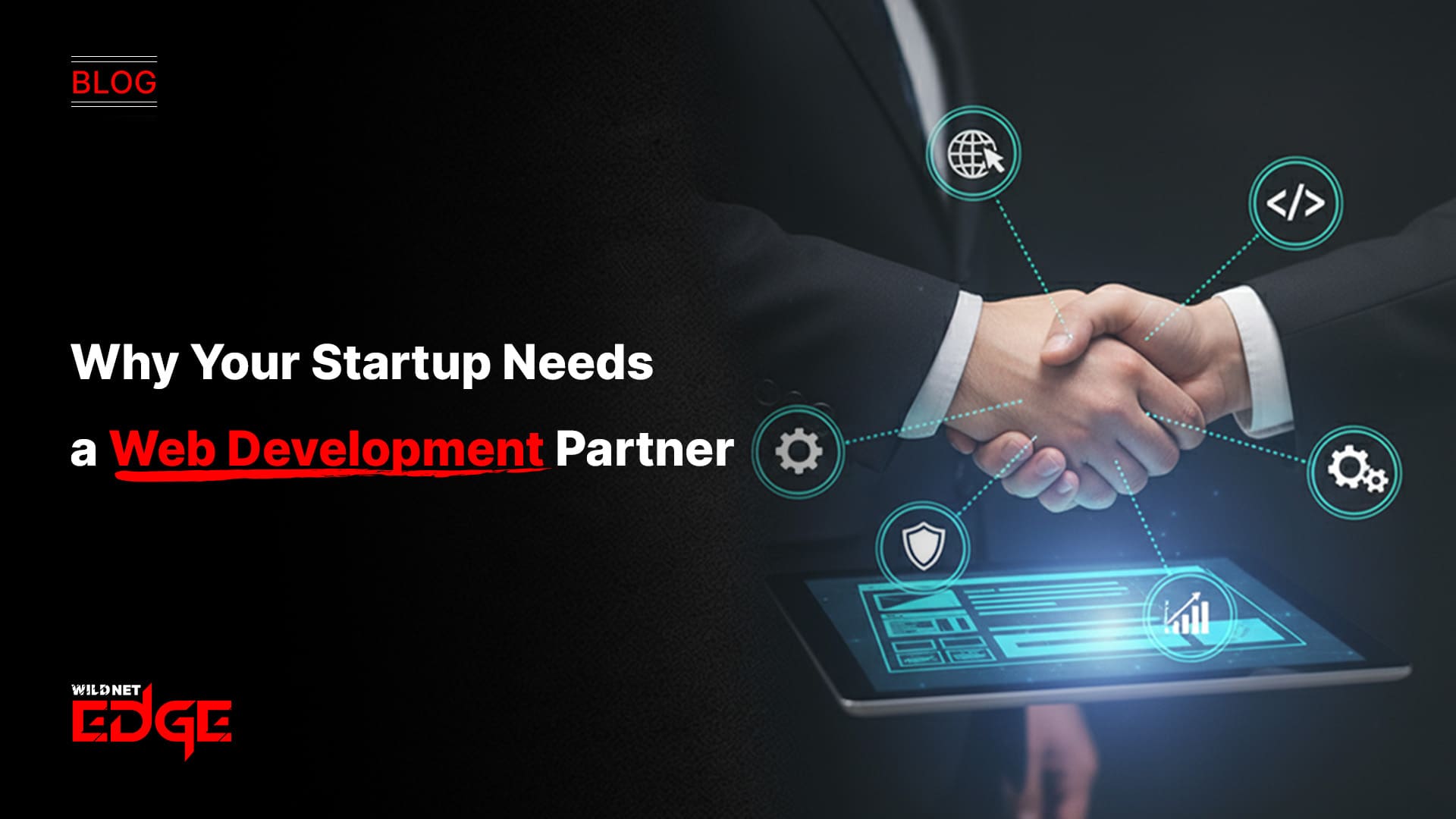TL;DR
This article explores the strategic integration of artificial intelligence into Software-as-a-Service products, moving beyond hype to practical application. It explains that embedding AI in SaaS is becoming essential for differentiation and delivering enhanced value. The guide details key use cases, including hyper-personalization, intelligent automation of workflows, predictive analytics for actionable insights, and enhanced security features. It outlines a structured implementation approach, emphasizing the importance of aligning AI features with business goals, ensuring data readiness, and planning for MLOps. For SaaS providers, incorporating AI-powered product features is crucial for improving customer retention, operational efficiency, and maintaining a competitive edge in the evolving market.
Software-as-a-Service has fundamentally changed how businesses operate, offering accessibility and scalability. However, providing core functionality is no longer enough as the market matures. The next wave of competitive advantage lies in intelligence. Embedding AI in SaaS products transforms applications from static tools into dynamic, learning systems that deliver unprecedented value, automate complex tasks, and create deeply personalized user experiences. For SaaS providers in 2026, integrating AI is rapidly shifting from a differentiator to a necessity.
What Does AI in SaaS Mean?
AI in SaaS refers to the integration of artificial intelligence technologies such as machine learning, natural language processing, computer vision, and predictive analytics directly into the features and functionalities of a SaaS application. Instead of AI being a separate tool, it becomes an intrinsic part of the product’s core value proposition.
This means leveraging data collected within the SaaS platform to power intelligent features. Examples range from smart recommendations and automated workflows to predictive insights and conversational interfaces. The goal is to create AI-driven SaaS platforms that are not just functional but actively learn and adapt to help users achieve their goals more effectively.
Why Embed AI into Your SaaS Product? The Business Case
Integrating AI is a strategic investment that drives significant business benefits for SaaS companies.
Enhanced Customer Value and Retention
AI-powered product features can dramatically improve the user experience and deliver greater value. AI can automate tedious tasks, provide proactive insights, and personalize the interface, making the product stickier and reducing churn. When your product actively helps users achieve better outcomes, they are far less likely to switch to a competitor.
Competitive Differentiation
In crowded markets, unique, intelligent features can set your product apart. AI capabilities like advanced predictive analytics or highly accurate personalization can become a key selling point that competitors using generic platforms cannot easily replicate. This is crucial for standing out and commanding premium pricing.
Improved Operational Efficiency (Internal & External)
AI can automate processes not just for your users but also for your own operations. SaaS automation with AI can streamline customer support with intelligent chatbots, optimize infrastructure costs based on predicted usage, or even assist in identifying potential upsell opportunities within your user base.
New Revenue Streams
AI capabilities can sometimes be packaged as premium add-ons or separate product tiers, creating new avenues for monetization. For example, offering advanced AI-powered forecasting as part of an “Enterprise” plan. Expert AI-enabled SaaS platform engineering is key to building these valuable features.
Key Use Cases for AI-Powered Product Features
The potential applications are numerous, but the main ones that are likely to be common in different SaaS categories have already been identified.
- Intelligent Automation: The incorporation of AI in the automation of complex workflow processes that are otherwise highly manual and time-consuming. This could mean automatically classifying customer support tickets, report generation from data that is not structured or scheduling that takes into account several constraints is done optimally. This is the main feature of SaaS automation that is complemented with AI.
- Hyper-Personalization: Customizing the whole user experience for every single user. The whole process of identifying content that a user is likely to want and suggesting it, changing the look of the user interface depending on the behavior of the user, and making different onboarding flows for different users are all included in this.
- Predictive Analytics & Insights: Mining user and application data to make predictions about future events. For instance, the prediction of customer churn likelihood, CRM data being used to provide sales trend forecasting, and operational bottlenecks being identified are a few examples of such predictions.
- Natural Language Processing: Facilitating software interaction between the user and the machine through natural language. This is the foundation of functionalities such as the provision of customer support via intelligent chatbots, use of voice commands, or performing sentiment analysis on customer feedback.
- Enhanced Security: Application of machine learning in the detection of unusual user behavior that could either imply a security threat or be part of a fraudulent operation.
Strategic Implementation: Building AI into Your Roadmap
Successfully embedding AI in SaaS requires a thoughtful, strategic approach, not just plugging in an algorithm.
1. Start with the Business Problem
Don’t implement AI for its own sake. Identify a specific, high-value customer problem or internal inefficiency that AI can uniquely solve better than traditional methods. Align your AI features directly with your core product strategy and user needs.
2. Assess Data Readiness
AI models require data often lots of it. Evaluate the quality, quantity, and accessibility of the data within your platform. Do you have enough relevant data to train an effective model? Is it clean and well-structured? Data preparation is often the most time-consuming part of an AI project. This critical step often benefits from expertise in enterprise AI implementation.
3. Choose Your Approach: Build vs. Buy vs. Integrate
- Build: Develop custom AI models in-house or with a partner. Offers maximum control and differentiation but requires significant expertise and investment.
- Buy: Integrate pre-built AI features from third-party vendors via APIs. Faster time-to-market but less differentiation.
- Integrate Platform Services: Leverage AI/ML services offered by cloud providers (AWS SageMaker, Azure ML, Google AI Platform). Offers a balance of control and pre-built infrastructure.
4. Adopt an MVP Mindset
Start with a focused pilot project for your first AI feature. Define clear success metrics and launch it to a subset of users to gather feedback and validate its effectiveness before a full rollout.
5. Plan for MLOps
Deploying and maintaining machine learning models in production (MLOps) is complex. Plan for monitoring model performance, retraining models with new data, and managing the entire lifecycle to ensure your AI features remain accurate and effective over time. This ensures your ML features in SaaS stay relevant.
AI Integration in SaaS: Case Studies
Case Study 1: A CRM’s Predictive Lead Scoring
- The Challenge: A CRM provider wanted to offer its users a way to prioritize leads more effectively. Sales teams were wasting time on prospects who were unlikely to convert.
- Our Solution: We developed an integrated machine learning model that analyzed historical lead data and real-time engagement signals to generate a predictive “propensity to buy” score for each new lead. This required careful smart product design with ML.
- The Result: Sales teams using the AI-powered lead scoring focused their efforts on higher-potential leads, resulting in a 25% increase in lead conversion rates and a shorter overall sales cycle for the CRM’s customers.
Case Study 2: An HR Platform’s Automated Resume Screening
- The Challenge: An HR SaaS platform wanted to help its users (recruiters) save time sifting through hundreds of resumes for open positions. Manual screening was a major bottleneck.
- Our Solution: We implemented an NLP-based feature that could automatically parse resumes, extract key skills and experience, and rank candidates based on their match to the job description. This provided a powerful example of SaaS automation with AI.
- The Result: Recruiters using the platform reduced their initial screening time by over 60%. They were able to identify top candidates much faster, improving the quality of hires and reducing time-to-fill for open positions.
Our Technology Stack for AI-Driven SaaS
We leverage a modern stack for building intelligent, scalable platforms.
- AI/ML Frameworks: TensorFlow, PyTorch, Scikit-learn, spaCy (NLP)
- Cloud AI Platforms: AWS SageMaker, Azure Machine Learning, Google AI Platform
- Data Processing: Apache Spark, Databricks, Snowflake
- Backend: Python, Node.js, Go
- MLOps: Kubeflow, MLflow, DVC
- Infrastructure: Kubernetes, Docker, Terraform
Conclusion
The incorporation of AI into SaaS products is a major step in the right direction to provide high value and keep the pace with the competition. When AI-enabled product functionalities like personalization, automation, or analytics are coupled with a smart strategy, the result can be the production of more engaging and attractive products, the boost of the efficiency of the operations, and even the opening of new avenues for growth. It all boils down to a careful and methodical manner that connects technology to business goals clearly and concentrates on the needs of the customers.
Ready to build the next generation of intelligent SaaS? At Wildnet Edge, our AI-first approach ensures we deliver cutting-edge solutions. We partner with you to create AI-integrated enterprise systems that provide a lasting competitive advantage in your market.
FAQs
It depends heavily on the specific use case. Some features (like basic NLP chatbots) can start with less data, while complex predictive models might require thousands or millions of data points (e.g., user interactions, transactions) to achieve high accuracy. Data quality is often more important than sheer quantity initially.
ROI can be seen relatively quickly if the AI feature solves a major pain point. For example, an automation feature that saves users significant time might lead to improved retention and upsell conversions within 6-12 months. More strategic features might have a longer ROI horizon.
This requires a proactive AI governance strategy. Implement processes to audit your training data and models for bias, ensure transparency in how AI decisions are made (explainability), and prioritize fairness in the outcomes generated by your ML features in SaaS.
A hybrid approach often works best. Your existing team understands your product and customers, but specialized AI/ML engineers possess the deep expertise needed to build and deploy complex models effectively. Augmenting your team or partnering with an enterprise AI implementation expert is often the fastest path.
MLOps (Machine Learning Operations) is the practice of managing the lifecycle of machine learning models in production. It’s crucial because AI models degrade over time and need continuous monitoring, retraining, and redeployment to remain accurate and effective. Robust MLOps ensures your AI features deliver lasting value.
Yes, leveraging pre-built AI services via APIs (e.g., from OpenAI for language tasks, or Google Vision AI for image analysis) can significantly accelerate the development of certain AI-powered product features. The tradeoff is less customization and potential vendor lock-in.
Prioritize based on a combination of potential customer value, technical feasibility, and alignment with your core business strategy. Start with a feature that addresses a significant user pain point and for which you have reasonably good data available.

Nitin Agarwal is a veteran in custom software development. He is fascinated by how software can turn ideas into real-world solutions. With extensive experience designing scalable and efficient systems, he focuses on creating software that delivers tangible results. Nitin enjoys exploring emerging technologies, taking on challenging projects, and mentoring teams to bring ideas to life. He believes that good software is not just about code; it’s about understanding problems and creating value for users. For him, great software combines thoughtful design, clever engineering, and a clear understanding of the problems it’s meant to solve.
 sales@wildnetedge.com
sales@wildnetedge.com +1 (212) 901 8616
+1 (212) 901 8616 +1 (437) 225-7733
+1 (437) 225-7733































